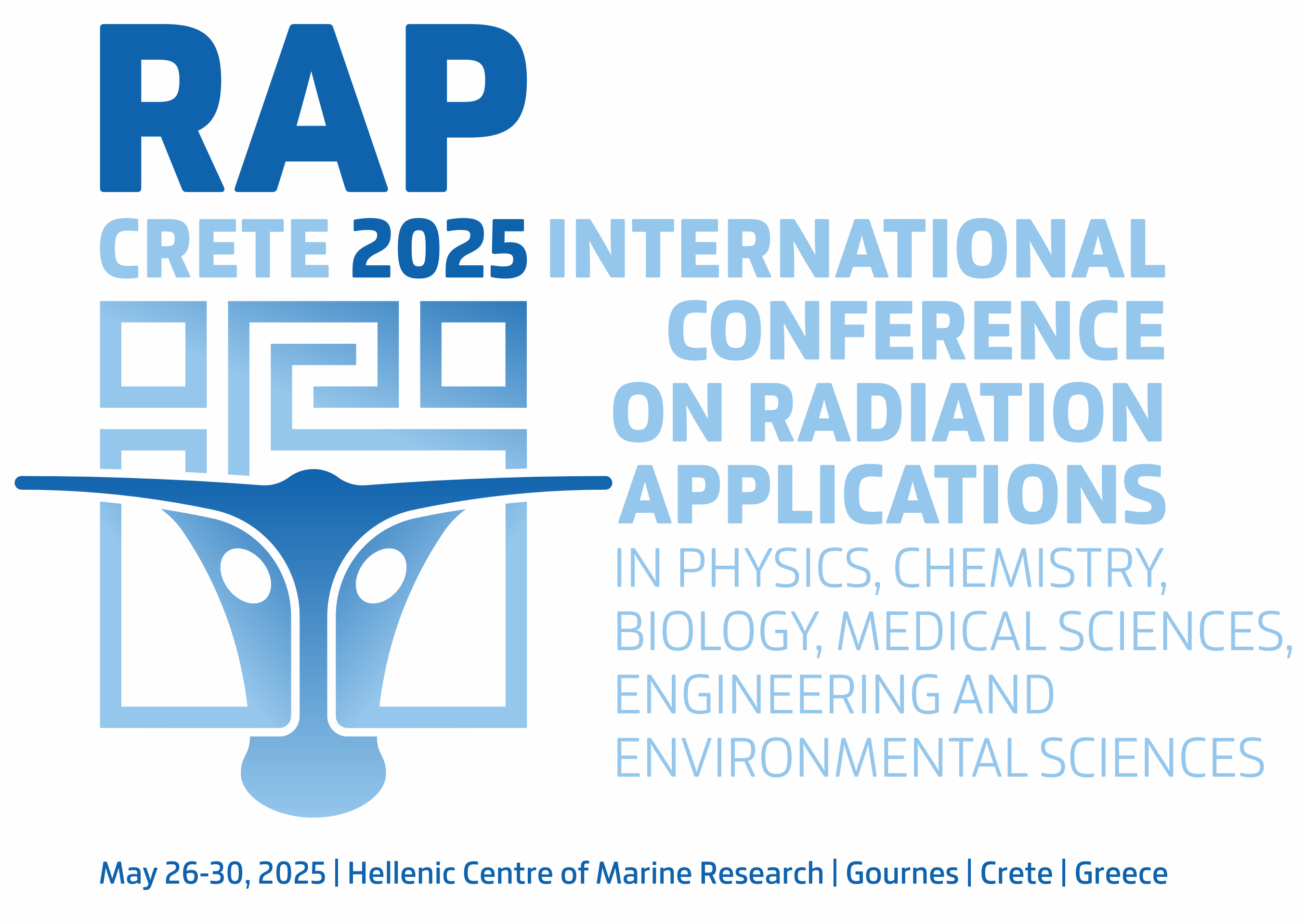Vol. 4, 2019
Radiation Protection
A NEED FOR EYE LENS DOSIMETRY IN NUCLEAR MEDICINE
M. Wrzesień, L. Królicki, Ł. Albiniak, J. Olszewski
Pages: 67–71
DOI: 10.37392/RapProc.2019.14
Abstract | References | Full Text (PDF)
Changing the individual dose limit for the lens of the eye from a value of 150 mSv per year to a level of 20 mSv (averaged over defined periods of five years or 50 mSv in a single year) means that issues related to routine eye lens dosimetry become interesting from the point of view of radiation protection. This could mean that the dosimeter designed to measure the doses at the level of the eye lens may become the next dosimeter routinely worn by nuclear medicine workers occupationally exposed to ionising radiation. The dosimeters currently used in nuclear medicine are the personal dosimeter and the ring dosimeter. Will this also be the case for nuclear medicine employees? In this interdisciplinary branch of medicine, the factors that cause the highest risk of radiation exposure of personnel are the process of manual handling, i.e. the process of preparing a radiopharmaceutical called labelling. Most of the radiopharmaceuticals used in nuclear medicine are labelled manually. In Poland, the exception from this rule is when radiopharmaceuticals are produced for the needs of positron emission tomography (PET), which are labelled using automatic processes. Manual procedures also include the process of radiopharmaceutical injection to the patients. The aim of the work was to assess the exposure of eye lenses of workers in nuclear medicine, as well as of the personnel in centers that produce radiopharmaceuticals for PET diagnostics, from the viewpoint of advisability of routine eye lens exposure monitoring, taking into account changes in the dose limit for the lens of the eye. Methods: The results of own measurements of the personal dose equivalent Hp(3), carried out in five nuclear medicine departments in Poland, as well as in two centers producing radiopharmaceuticals for PET, were subject to analysis. The analysis includes two most frequently used radionuclides for diagnostic purposes, namely 99mTc, 18F and the less frequently used 68Ga, in addition to 131I, which is used for therapeutic purposes. Dosimetric measurements were made using thermoluminescent detectors of domestic manufacture. Results & Conclusions: Estimated analysis of the annual exposure makes it possible to indicate cases where the maximum annual value of personal dose equivalent, in terms of Hp(3), exceeds threefold the new limit value specified at 20 mSv/year.
- ICRP statement on tissue reactions and early and late effects of radiation in normal tissues and organs—threshold doses for tissue reactions in a radiation protection context, vol. 41, ICRP Publication no. 118, ICRP, Ottawa, Canada, 2012.
DOI: 10.1016/j.icrp.2012.02.001
PMid: 22925378 - The 2007 Recommendations of the International Commission on Radiological Protection, vol. 37, ICRP Publication no. 103, ICRP, Ottawa, Canada, 2007.
Retrieved from: https://journals.sagepub.com/doi/pdf/10.1177/ANIB_37_2-4
Retrieved on: Apr. 20. 2019 - Implications for Occupational Radiation Protection of the New Dose Limit for the Lens of the Eye, TECDOC No. 1731, IAEA, Vienna, Austria, 2013.
Retrieved from: https://www-pub.iaea.org/MTCD/Publications/PDF/TE-1731_web.pdf
Retrieved on: May 12, 2019 - J. Dabin et al., “Eye lens doses in nuclear medicine: a multicentric study in Belgium and Poland,” Radiat. Prot. Dosim., vol. 170, no. 1 – 4, pp. 297 – 301, Sep. 2016.
DOI: 10.1093/rpd/ncv538
PMid: 26822424 - S. Leide-Svegborn, “External radiation exposure of personnel in nuclear medicine from 18F, 99mTc and 131I with special reference to fingers, eyes and thyroid,” Radiat. Prot. Dosim., vol. 149, no. 2, pp. 196 – 206, Apr. 2012.
DOI: 10.1093/rpd/ncr213
PMid: 21571739 - Materiały i sprzęt ochronny przed promieniowaniem X i gamma -- Obliczanie osłon stałych, PN-86/J-80001, Czerwiec 10, 1986. (Materials and equipment protection against X-rays and gamma rays. Calculation the thickness of shields used against ionizing radiation, PN-86/J-80001, Jun. 10, 1986.)
Retrieved from: http://www.narzedziownie.pl/?t=k&i=202&n=21274
Retrieved on: Jan. 18, 2019 - K. A. Pachocki, A. Sackiewicz-Słaby, “Determining the current status and potential of nuclear medicine in Poland,” Rocz. Państw. Zakł. Hig., vol. 64, no. 3, pp. 243 – 250, 2013.
Retrieved from: http://wydawnictwa.pzh.gov.pl/roczniki_pzh/download-article?id=992
Retrieved on: Aug. 22, 2019 - Stan zdrowia ludnoœci polski w 2004 r., Główny urząd statystyczny, Warszawa, Polska, 2006. (The health status of the Polish population in 2004, Central Statistical Office, Warsaw, Poland, 2006.)
Retrieved from: https://stat.gov.pl/cps/rde/xbcr/gus/stan_zdrowia_2004.pdf
Retrieved on: Aug. 28, 2019 - X and gamma reference radiations for calibrating dosemeters and doserate meters and for determining their response as a function of photon energy, part 1,ISO Report 4037–1, ISO, Geneva, Switzerland, 1997.
- X and gamma reference radiation for calibrating dosemeters and doserate meters and determining their response as a function of photon energy, part 3, ISO Report 4037–3, ISO, Geneva, Switzerland, 1999.
Retrieved from: https://www.sis.se/api/document/preview/615127/
Retrieved on: May 15, 2019 - F. Vanhavere et al., “Measurements of eye lens doses in interventional radiology and cardiology: Final results of the ORAMED project,” Radiat. Meas., vol. 46, no. 11, pp. 1243 – 1247, Nov. 2011.
DOI: 10.1016/j.radmeas.2011.08.013 - F. Vanhavere et al., ORAMED: Optimization of radiation protection of medical staff, Rep. 2012-02, EURADOS, Braunschweig, Germany, 2012.
Retrieved from: https://eurados.sckcen.be/-/media/Files/Eurados/documents/EURADOS_Report_201202.pdf?la=en&hash=06DAE419D9DE47 619319719264086015D1D9143E
Retrieved on: Sep. 4, 2019 - M. Wrzesień, “18F-FDG production procedures as a source of eye lens exposure to radiation,” J. Radiol. Prot., vol. 38, no. 1, pp. 382 – 393, Feb. 2018.
DOI: 10.1088/1361-6498/aaa287
PMid: 29447122 - M. Wrzesień, L. Królicki, Ł. Albiniak, J. Olszewski, “Is eye lens dosimetry needed in nuclear medicine?,” J. Radiol. Prot., vol. 38, no. 2, pp. 763 – 774, Jun. 2018.
DOI: 10.1088/1361-6498/aabef5
PMid: 29667600 - M. Wrzesień, Ł. Albiniak, “68Ga-DOTA-TATE—a source of eye lens exposure for nuclear medicine department workers,” J. Radiol. Prot., vol. 38, no. 4, pp. 1512 – 1523, Dec. 2018.
DOI: 10.1088/1361-6498/aaea8e
PMid: 30468680 - The Council of European Union. (Dec. 5, 2013). Council Directive 2013/59/EURATOM. Laying down basic safety standards for protection against the dangers arising from exposure to ionising radiation, and repealing Directives 89/618/Euratom, 90/641/Euratom, 96/29/Euratom, 97/43/Euratom and 2003/122/Euratom.
Retrieved from: https://eur-lex.europa.eu/LexUriServ/LexUriServ.do?uri=OJ:L:2014:013:0001:0073:EN:PDF
Retrieved on: Jul. 21, 2019


